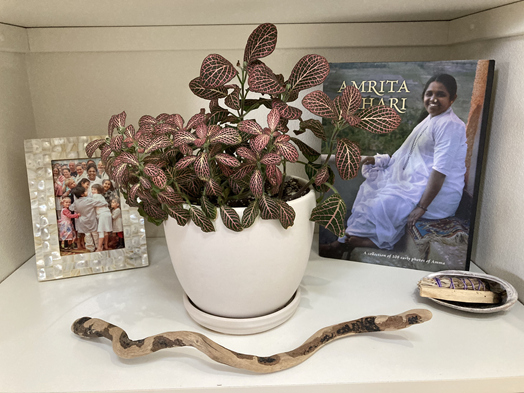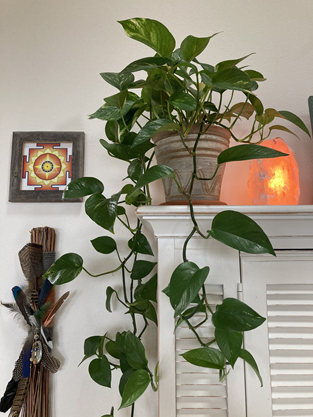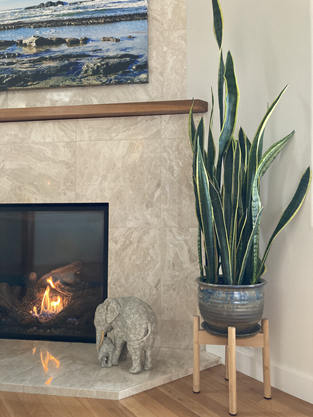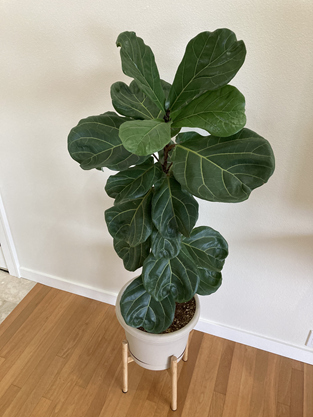
Home > Newsletters > GreenFriends Newsletters
| Home | Source Reduction | Friends of Green Friends | Newsletters |
| Gardening | Resources | What You Can Do | Embracing The Trees |
| The Healing Benefits of the Humble Houseplant |
 |
|
The Covid-19 pandemic has left many of us feeling frustrated, isolated and at times, lonely. Caring for houseplants can give a sense of purpose and awaken devotion. Like people, plants require love and attention and have different personalities, needs, likes and dislikes. The great thing about plants is they aren’t too needy and tend to be very forgiving, which makes them wonderful quarantine buddies! They offer a sense of consistency and comfort in this ever-changing world and provide a simple way to connect with Mother Nature right from the comfort and safety of our own homes. Take it from a proud plant Mom who has 13 and counting! Here are a few of my favorites: |
|||
|
|||
|
Houseplants do so much more than jazz up the décor! Although they add a touch of vibrancy and beauty to our living and working spaces, they provide many other benefits as well. Scientific research has shown that plants can uplift our mood and improve physical and mental well-being. Studies reveal lower stress levels in people who green the inside of their homes. Plants can combat colds by increasing humidity in the air and by decreasing dust and removing airborne toxins and contaminants. This helps to improve respiratory function. Many plants also provide medicinal remedies. All are certainly redeeming qualities, in a humdinger of a year like this one! Diya Heal, Oregon |
|
Some Helpful Houseplant Care Tips From GreenFriends Water One main area of houseplant mortality is due to over or under watering, causing stress and even death of the plant. Because of the variations in indoor temperature and humidity, it is difficult to gauge the soil moisture of a potted plant. The surface tends to dry out much faster than the soil below. Your gardening store or an online gardening store will have a variety of moisture meters that can be used for this. They have a probe that goes into the soil and a meter that tells if the soil below is dry, moist or wet. Some will even gauge the pH as well. For plants that you have completely forgotten about watering, and then discover the soil has become bone dry, rather than throw the poor plant into the compost, first try to revive it. When the soil is so dry, it is difficult for the soil to absorb the water you add to it from the top of the pot. The soil can become seemingly impermeable to the water, similar to a very dry sponge. It needs to be slowly coaxed to absorb water again. One method for this is by placing it in an open bin and adding water to the bin up to half the height of the pot. Then water the pot from top as well. Give some time for the soil to absorb the water, which could take up to an hour or two depending on the size of the pot. Be sure not to leave it soaking for several hours. When the soil is moistened, remove the pot, allow it to drain fully and put it back in its place. Then use the moisture meter mentioned above, before watering again to reduce the chance of overwatering. |
 |
|
Humidity Indoor humidity during winter is often an issue, due to household heating systems. One way to provide more humidity for a plant that requires it, is to fill the pot's drip tray (saucer) with pebbles and add water. However, don't allow the pot to sit in water, because it could cause rot in the bottom of the pot. Light Each plant will have a care tag with it when you purchase it, which tells the amount and quality of light the plant requires for healthy growth. Consider the light available in the areas in your home and where you would like to put a plant before shopping, so you can be more confident that it will have the light it requires. Fertilizing There are many organic fertilizers for plants. One is kelp meal, which can be diluted with water. Periodic watering with kelp meal maintains the nutrients that are required for healthy growth. Pests and Fungus Your organic gardening center will have organic options to choose from, to treat occasional issues with pests or fungus. However, if watering and light are adequate for the plant, then these issues are very rare. There are many organic gardening websites which can be reviewed for advice as well . In her article above, Diya gives examples of many easy to grow, fairly trouble-free plants that you can start with. We would love to hear about your indoor gardening experience this season. Please write to us at info@greenfriendsna.org. "All plants are our brothers and sisters and they talk to us and if we listen we can hear them." |
Read How to be a Conscious Shopper from the Winter 2020 newsletter >>
| Home | Source Reduction | Friends of Green Friends | Newsletters | Resources | What You Can Do | Embracing The Trees |
For more information, e-mail info@greenfriendsna.org |
||||||


